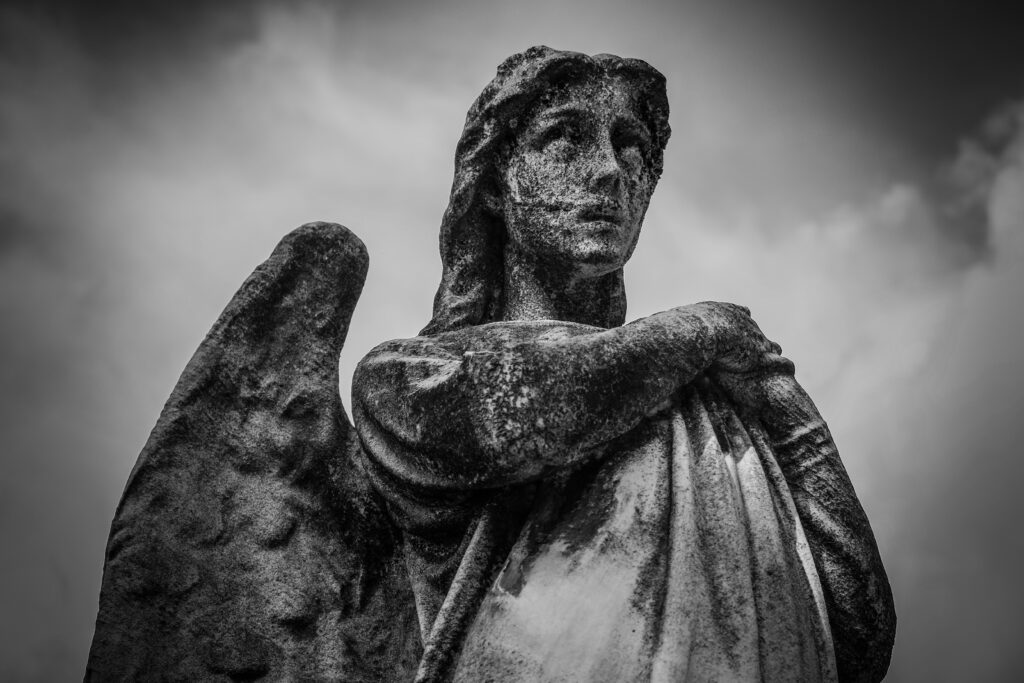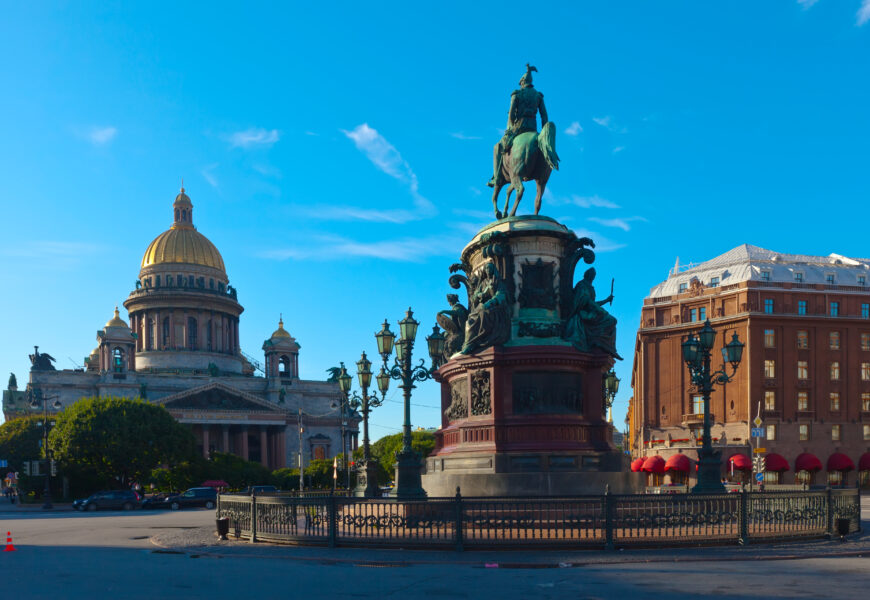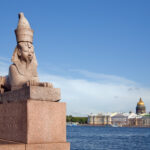Introduction
Brief History of Statues in Russia – Russian fallen angel statue
In the vast land of Russia, statues have long played a significant role in expressing cultural values, historical events, and artistic creativity. Statues have long been used by Slavic tribes as a way of telling stories and honoring memories.
Ancient statues were often depictions of gods and goddesses. Placed in temples or public squares as symbols of faith and devotion, statues became increasingly symbolic over time; during Tsarist times rulers and war heroes began appearing, symbolizing their power within Russia’s empire.
In the Soviet period, statues took on a new meaning. They became tools for promoting ideology, with many monuments dedicated to workers, soldiers, and revolutionary leaders. These statues were not just pieces of art; they were symbols of a new social order.
Today, statues in Russia are diverse and multifaceted. They range from historical figures to abstract art, each telling a unique story. Some are controversial, sparking debates and discussions, while others are universally admired. The recent viral TikTok video of a supposed fallen angel statue is a testament to the enduring fascination with statues in Russian culture.


The Mystery and Lore Surrounding Angelic Figures
Angelic figures have always held a place of mystique and intrigue within society, from cultures such as Russia. Angels are seen as divine messengers, protectors and guides who travel between heaven and earth – with wings often representing their ability to fly between these realms.
The lore surrounding angels is rich and complex. Religion texts generally depict angels as pure and noble beings who work on behalf of a higher power. Angels are seen as possessing incredible strength and wisdom, often associated with significant events or revelations that take place.
In art and literature, angels have been portrayed in many different ways. Sometimes they are shown as gentle and loving, with soft features and glowing halos. At other times, they’re depicted as powerful warriors equipped with swords and shields ready to battle for justice and righteousness.
The concept of fallen angels adds yet another layer to this mysterious tale. According to some beliefs, fallen angels are those who have been banished from Heaven after disobeying or rebelling against divine authority. Typically associated with darkness and temptation, their stories often feature drama.
The viral TikTok video of the alleged fallen angel statue in Russia tapped into this rich lore. People were intrigued and divided over its authenticity or not; many speculated as they debated its purpose and interpretations. Many saw its image with sword, shield and massive wings as captivating; prompting endless interpretations and discussions among its admirers.
The tale of the fallen angel statue serves as a powerful reminder of their universal appeal. Whether real or imagined, angels continue to fascinate and inspire, reflecting our deepest hopes, fears, and desires.
The Birth of the Fallen Angel Statue
Inspiration for its Creation – Russian fallen angel statue
The story of the fallen angel statue, though ultimately revealed to be a hoax, ignited imaginations and curiosity. While the specific inspiration behind this particular statue remains a mystery, the concept of fallen angels has long been a source of fascination in art and literature.
Fallen angels, cast out of heaven for their rebellion, embody a complex blend of beauty and tragedy. They represent a struggle between good and evil, purity and corruption. Artists throughout history have been drawn to these themes, seeking to capture the essence of these celestial beings in various forms.
In the case of the viral TikTok video, the creators may have been inspired by the rich lore surrounding fallen angels, as well as the desire to create a sensation on social media. The statue’s eerie appearance, with its sword, shield, and wings, was designed to intrigue and mystify, sparking debates and discussions.
Artist Behind the Masterpiece – Russian fallen angel statue
The artist behind the alleged fallen angel statue remains unknown, as the entire story was later revealed to be a fabrication. However, the tale of the miners stumbling upon the statue and the subsequent viral sensation highlights the power of storytelling and creativity.
Art is often defined by more than skill and talent; creating masterpieces requires vision and imagination as well. An artist, whether sculptor, painter, or storyteller, seeks to elicit emotions while sparking thought processes through transformable materials transforming everyday material into extraordinary experiences.
While the fallen angel statue may not be an actual historical artifact, its story serves as a powerful reminder of artistic expression’s endless potential. It shows how a simple object can become a symbol, a mystery, and a conversation starter.
Construction Details: Materials, Size, Place – Russian fallen angel statue
The construction details of the alleged fallen angel statue are shrouded in mystery, as the entire story was later debunked as a hoax. Notwithstanding, video and pictures of the sculpture give a few pieces of information regarding its personality.
The sculpture had all the earmarks of being produced using stone or comparable materials, giving it a matured and worn appearance. Its size was substantial, with large wings and intricate details on the sword and shield. The place where it was supposedly found, near the Russian town of Zeya, added to the intrigue, as it was allegedly excavated by miners.
Though the statue itself was revealed to be a fabrication, the story of its discovery and the subsequent viral sensation offers insights into the power of storytelling and the human fascination with the unknown.
Symbolism and Interpretation – Russian fallen angel statue
The Meaning Behind the Fallen Angel
The concept of a fallen angel carries deep symbolic meanings. It represents a being that once dwelled in heaven but was cast out for disobedience or rebellion. This duality of purity and corruption, virtue and vice, resonates with many cultural and philosophical themes.
In the case of the alleged fallen angel statue, the symbolism was further enhanced by its mysterious appearance and the story of its discovery. It became a symbol of intrigue, curiosity, and the human desire to explore the unknown.
Cultural Connections in Russian Society – Russian fallen angel statue
Though an elaborate hoax, the tale of the fallen angel statue stirred much discussion in Russian society. Russia has an extensive cultural legacy encompassing religious, philosophical, and artistic traditions – with angels being prevalent themes across Orthodox Christianity, folklore and literature in Russia.
This statue’s viral success demonstrates Russia’s ongoing interest in mysticism and spiritual themes, while at the same time emphasizing social media’s role in shaping public opinion and building connections among people, ideas, and beliefs.
Controversies and Public Opinion – Russian fallen angel statue
The fallen angel statue story sparked debates and discussions, as people speculated about its authenticity and meaning. Some were drawn in by the mystery, while others were skeptical of its veracity.
The press secretary’s confirmation that the statue wasn’t real only deepened the controversy, sparking more discussions on hoaxes, misinformation and social media’s role in spreading false narratives.
The fallen angel statue offers an illustration of how an ordinary object can quickly become the focus of discussion, debate and thought. It highlights how art, culture and public opinion interact and also demonstrate storytelling’s profound effects in shaping perceptions and understandings of our environment.
The Setting – Russian fallen angel statue
Location of the Statue
The alleged fallen angel statue was said to have been found near the Russian town of Zeya, in Amur Oblast. Though later revealed to be a fabrication, the location itself added to the intrigue of the story. Zeya is a remote area, known for its rugged landscapes and mining activities. The idea of discovering something ancient and mysterious in such a place captured the imagination of many.
Surrounding Environment, Weathering Effects, Nearby Landmarks
The surrounding environment of the supposed statue was described as a mining area, adding a layer of realism to the story. Weathered statue, with its stone-like texture, was clearly exposed to the elements for some time – adding further credibility that this artifact had an ancient past.
Nearby landmarks were not specifically mentioned in the story; however, the region itself is known for its natural beauty with forests, rivers, and mountains all contributing to creating an eerie yet intriguing setting for the statue. This atmosphere added even further mystique and drama as its mysterious background provided both beautiful scenery and intrigue for its tale.
Connection to Local Traditions or Customs Though the fallen angel statue turned out to be an elaborate hoax, celestial beings and mysterious figures are nothing new in Russian culture; their presence can be found throughout folklore, religious beliefs, artistic traditions that explore themes such as divinity, supernaturalism, and the mysterious.
The story of the statue, with its blend of mystery and spirituality, resonated with these cultural themes. It served as a reminder of the timeless appeal of myths and legends, and the human desire to connect with something greater than ourselves.
The Fallen Angel in Popular Culture – Russian fallen angel statue
Appearances in Media, Art, Literature
The concept of fallen angels has long been a popular theme in media, art, and literature. From classic paintings to modern movies, these celestial beings have been portrayed in various ways, reflecting different interpretations and beliefs.
In literature, fallen angels have been depicted as tragic figures, struggling with their dual nature. In art, they have been portrayed as both beautiful and terrifying, capturing the complexity of their character.
The viral TikTok video of the alleged fallen angel statue is a recent example of how this theme continues to captivate audiences, sparking curiosity and debate.
Interpretations and Theories in Various Subcultures
The fallen angel motif has been interpreted in various ways by different subcultures and communities. Some see fallen angels as symbols of rebellion and individuality, while others view them as cautionary figures, representing the dangers of pride and disobedience.
In the world of conspiracy theories, fallen angels have been linked to ancient aliens, secret societies, and hidden knowledge. These interpretations add to the allure of the theme, making it a subject of ongoing interest and exploration.
Impact on International Recognition – Russian fallen angel statue
The story of the alleged fallen angel statue in Russia, though ultimately debunked, had a significant impact on international recognition. It quickly went viral, reaching audiences worldwide.
The tale was an opportunity to acknowledge the timeless appeal of myths and legends, the power of storytelling to connect people across cultures and borders, as well as to recognize social media’s role in shaping public opinion and creating global trends.
The fallen angel theme continues to captivate and perplex audiences, reflecting our collective interest in exploring unknown depths while searching for answers and meaning.
A Personal Perspective – Russian fallen angel statue
Personal Reflections, Experiences, Feelings Toward the Statue
Even though the statue turned out to be fake, its story offers a fascinating window into human curiosity, creativity, and our shared history of myths and legends. Personally, this tale awakens my sense of wonder while simultaneously serving as an important reminder of storytelling’s power.
The image of the statue, with its mysterious appearance and alleged ancient origin, captures the imagination. It invites us to explore the unknown, to question our beliefs, and to reflect on our own relationship with the mystical and the divine.
Interview Snippets from Locals, Tourists, Art Experts
Neighborhood Occupant: ” At the point when I saw the video interestingly, it left me stunned! It appeared so realistic that I wanted to believe it was real.” Unfortunately it turned out to be faked but nonetheless was thrilling while it lasted.”
Tourist: “When traveling through Russia, I learned about the fallen angel statue and its intriguing tale. This led me to further research the country’s culture and history.”
Craftsmanship Master: ” Fallen holy messengers have for some time been a famous topic in workmanship.. This statue, though not genuine, is a testament to the enduring appeal of these celestial beings. It’s a reminder of how art can inspire, provoke, and connect us.”
Conclusion – Russian fallen angel statue
The story of the alleged fallen angel statue in Russia, though ultimately revealed to be a hoax, captured the attention and imagination of people around the world. Its mysterious appearance, the lore surrounding fallen angels, and the setting in a remote mining area all contributed to its allure.
The statue became a symbol of intrigue, curiosity, and the human desire to explore the unknown. It resonated with cultural themes, artistic traditions, and our collective fascination with myths and legends.
However not a valid piece, the sculpture’s story epitomized numerous parts of Russian culture, including its rich legends, strict convictions, and imaginative articulation. Also, virtual entertainment was featured for its part in molding general assessment and associating individuals across thoughts and convictions.
The fallen angel statue serves as an excellent example of how a simple object can transform into an icon for intrigue, debate and reflection. It reminds us to consider how art, culture and public opinion interact as well as storytelling’s capacity for shaping our perceptions and understanding of life around us.
Invitation for Readers to Explore and Discover
The tale of the fallen angel statue invites us all to explore and discover. Whether through art, literature, or personal reflection, the theme of fallen angels offers endless possibilities for creativity, interpretation, and understanding.
As readers, we are encouraged to delve into the rich lore surrounding celestial beings, to question our beliefs, and to seek our own connections with the mystical and the divine. The story of the fallen angel statue is a starting point, a gateway to a world of wonder and exploration.









